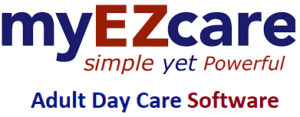In the rapidly evolving landscape of healthcare, one of the most significant advancements has been the development and integration of Electronic Health Records (EHRs). These digital records have revolutionized the way patient information is stored, accessed, and utilized, leading to improved patient care, streamlined workflows, and enhanced data security. However, the journey of EHRs has been far from straightforward, with interoperability emerging as a crucial component in maximizing their potential.
The Early Days of EHRs
The concept of EHRs dates back to the 1960s, but it wasn't until the late 20th century that their adoption began to gain momentum. Early systems were rudimentary, often limited to specific departments within hospitals. The primary challenge was the lack of standardization, which hindered the sharing of information between different systems and healthcare providers.
The Push for Standardization
The early 2000s marked a significant turning point with government initiatives and policies advocating for the adoption of standardized EHR systems. The Health Information Technology for Economic and Clinical Health (HITECH) Act of 2009 incentivized healthcare providers to adopt EHRs and adhere to meaningful use criteria, emphasizing the importance of interoperability.
Interoperability: The Key to Comprehensive Care
Interoperability refers to the ability of different EHR systems to communicate, exchange, and interpret shared data. It's essential for providing comprehensive care, as it ensures that patient information is accessible across various healthcare settings. Achieving interoperability involves overcoming technical, organizational, and legal barriers. Standards such as HL7 and FHIR (Fast Healthcare Interoperability Resources) have been developed to facilitate this process, allowing for seamless data exchange.
The Benefits of Interoperable EHRs
- Improved Patient Care: Interoperable EHRs provide healthcare providers with complete and accurate patient information, enabling better decision-making and reducing medical errors.
- Enhanced Efficiency: Streamlined workflows and reduced paperwork allow healthcare professionals to focus more on patient care rather than administrative tasks.
- Cost Savings: Efficient data sharing reduces redundant tests and procedures, leading to cost savings for both healthcare providers and patients.
- Patient Empowerment: Patients have greater access to their health information, promoting active participation in their own care.
Looking Ahead
The future of EHRs and interoperability holds exciting possibilities. Advances in artificial intelligence and machine learning can further enhance the capabilities of EHRs, providing predictive analytics and personalized care plans. Continued collaboration between healthcare providers, technology developers, and policymakers is essential to overcoming remaining challenges and ensuring that EHR systems reach their full potential.
In conclusion, the evolution of EHRs and the quest for interoperability represent a transformative journey in healthcare. By embracing these advancements, we move closer to a more connected, efficient, and patient-centered healthcare system.


